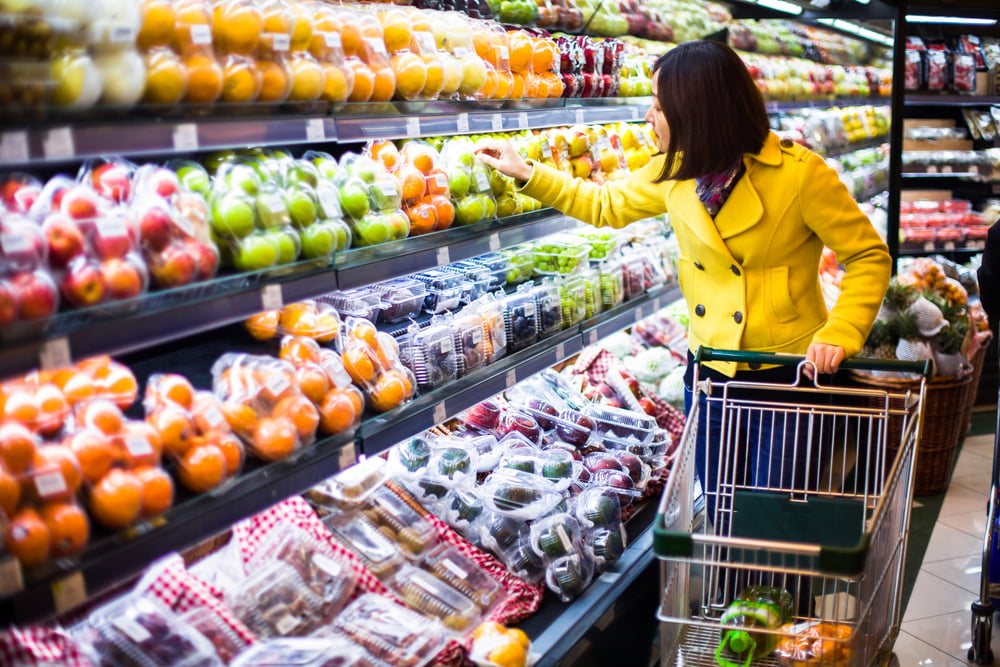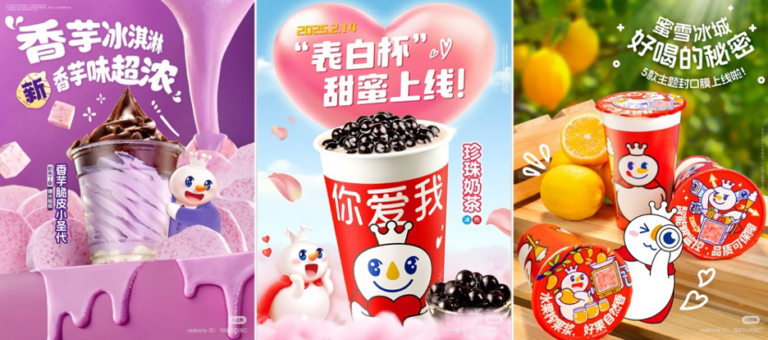China’s food and beverage market has experienced significant growth in recent years, attracting companies from various industries. Several factors have influenced the industry’s development during this period. The COVID-19 pandemic has brought about changes in people’s habits and values, leading to an increased focus on health and well-being. Additionally, the growing affluent population now vaunts greater purchasing power, allowing for increased spending on premium food and beverage products.
E-commerce dominates China’s food and beverage industry distribution
One of the most significant developments in recent years that has impacted the food and beverage industry is the exponential growth of e-commerce. Digitalization has played a crucial role in driving the rapid expansion of the fresh food e-commerce market in China. This has led to the popularization of food delivery services and turned e-commerce into the most important distribution channel for health food in China. With the increasing popularity of food delivery services, China’s online-to-offline food market is forecasted to become the world’s largest. This market is currently dominated by Alibaba and Tencent.
Digitalization is driving innovation within the industry and playing a pivotal role in the growth of foodtech in China, with advancements ranging from innovative farming techniques to convenient e-grocery apps and efficient supply chain management using blockchain. Furthermore, digitalization is also reshaping offline customer experience, with unmanned stores and breakfast vans making notable inroads into the Chinese breakfast market.
Health is becoming a priority
The pandemic has shifted people’s perceptions of health: in 2021, health and family safety became the top concerns for half of Chinese consumers. As a result, consumers are now paying greater attention to the quality of products: including factors such as their safety, natural ingredients and nutrition. This shift in consumer preferences has prompted many companies to incorporate healthier or dietetic ingredients in their products. This trend is evident across various beverage categories, ranging from soft drinks to coffee.
China enacted a new food import law in 2022 aimed at improving food safety regulations, making it more difficult for foreign companies to import their products into the country. This law was enacted in response to growing concerns among Chinese consumers about food hygiene and safety, with a 2021 survey reporting that 64% of consumers were worried about these issues.
Health perception and dietary preferences are shifting, but the trust in Chinese medicine remains strong. Traditional Chinese Medicine (TCM) constitutes a significant part of the food and beverage market. The popularity of TCM increased due to multiple factors: the pandemic, increasingly stressful lifestyle among Gen-Z and Millennials, and the Guochao trend promoting cultural confidence.
Social media are a crucial instrument for marketing
Social media provide an important platform for promotion and sales of food and beverages in China. Many users share reviews of products online, and these are commonly used by consumers to form opinions, make purchasing decisions, and search for goods. These platforms are also utilized as marketing instruments: businesses collaborate with KOLs (Key Opinion Leaders) and virtual influencers, who boast large followings of loyal customers, thereby increasing product awareness.
who possess large followings of loyal customers, thereby increasing product awareness. However, social media have their downsides. They an inadvertently promote negative trends, as evidenced by the proliferation of eating disorders in China, with young women being encouraged to acquire detrimental eating habits that often lead to anorexia.
The growing pace of life pushes consumers to search for convenient foods and beverages
The massively changing lifestyles of Chinese people are affecting their food habits. The growing pace of life leaves many workers with limited free time and stimulates them to seek more accessible and convenient options. This trend is also evident in smaller cities where the number of white-collar workers is on the rise. This shift, along with rising health awareness, has fueled the growth of the energy drink market as consumers prioritize quick and revitalizing choices. Additionally, the rising incomes of Chinese workers and declining marriage rates are contributing to the growth of the ‘singles economy’. As the number of single-person households increases, there is a growing demand for ‘one-person meal’ restaurants, as well as pre-made meals.
Coffee sales have skyrocketed in the past years, driven by the growing attraction of younger generations to its consumption. Coffee-containing increasingly sought after for their fatigue-relieving properties, enjoyable taste, and perceived metabolism-boosting effects. Furthermore, consumers are looking for new tastes and innovation while supporting the Guochao. Recently, there has been a growing interest among Chinese youth in “temple coffee culture”, which refers to coffee prepared by Buddhist monks and sold in temples. This emerging trend reflects a desire to explore unique and culturally rich experiences surrounding coffee consumption.

Higher-quality and premium products are attracting more customers
The growing middle class and wealthier consumers are increasing their spendings on premium products, and buying fewer, but higher-quality goods. The surging incomes allow people to allocate more money on fulfilling enjoyment needs, thereby boosting the premium food and beverage market in China.
As part of this trend, the premium seafood market is experiencing growth, and luxury seafood products are becoming increasingly accessible. Imported products are particularly in demand in this sector, which presents an opportunity for foreign seafood brands to enter the market.
Premium alcohol has also seen success in China. While baijiu remains the best-selling spirit in the Chinese beverage market, more luxurious brands are attracting wealthier consumers. Premium products serve as a symbol of status and this has boosted sales of high-quality foreign alcohol, with drinks remaining an inherent part of the business etiquette in China. Another growing market is Made-in-China wine, especially in the premium category: the country has emerged as one of the top 10 world’s biggest wine-producing countries globally, with an increasing number of wineries mushrooming nationwide.
Growing health awareness expands and diversifies the dairy industry
The rise of the dairy industry has been largely driven by Chinese consumers’ growing awareness of health and nutrition. Chinese consumers are developing a greater appreciation for milk products. One prominent example of this growth is the widespread popularity of Yakult, a Japanese lactic acid beverage, which became a household staple in China.
Within the dairy market, the cheese market is experiencing an even greater expansion due to new food trends, such as children’s snacks and cheese milk tea or cheese lollipops, which attract customers through more innovative flavors.
Likewise, the ice cream market is also experiencing increasing demand and resulting in the emergence of a vast number of new enterprises in the sector.

Opportunities in China’s food and beverage market
The Chinese food and beverage market shows many novel developments and strong growth, and it is projected to expand. There are numerous areas that provide great opportunities for businesses growth, including the fresh food cold supply chain, which has not been able to meet the growing demand yet. Fast-moving consumer goods were significantly hit by the pandemic, but are now beginning to see a resurgence in sales, providing a favorable opportunity for businesses operating in this sector.
Additionally, emerging trends, such as a growing concern for sustainability, present greater possibilities for development. While sustainability has yet to significantly alter consumer behavior, there is an increasing number of buyers who pay attention to sustainability factors. This offers foreign startups opportunities in the Chinese sustainable food sector.
What are the newest developments in China’s food and beverage market?
- The food and beverage sector in China is showing promising growth and is forecasted to expand further.
- Since the pandemic, health and food safety have become top priorities for Chinese consumers.
- E-commerce is growing and transforming the food and beverage market, becoming one of the top channels of sales.
- Higher incomes are allowing people to prioritize quality and purchase premium products. However, due to the fast pace of life, sales of convenient foods and energy drinks are also increasing.
- The food and beverage market in China shows opportunities of growth both for local and foreign companies.
Download the ASEAN x China business relations report






